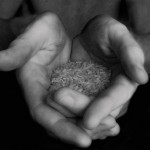Lost to the Drought: A Conversation with Ag Commissioner Todd Staples

Photo by Filipa Rodrigues/StateImpact Texas
Texas Agriculture Commissioner Todd Staples says losses from the drought are "unprecedented."
The drought has taken a toll on every Texan, and some of the worst hit have been the state’s ranchers and farmers. New numbers from the state this week provide some grim statistics on their losses. For some context, StateImpact Texas sat down with Texas Agriculture Commissioner Todd Staples.
Q: So what do these updated numbers mean?
A: These monumental numbers have confirmed what agricultural producers have known all along. That when you are as large a state as Texas, and you have a monumental drought event, you’re going to have enormous financial losses. And these losses have been crippling for many operations: 58 percent of the cotton acreage in Texas was abandoned; and we’ve had the largest liquidation of our cattle herd since the great depression. So the $7.62 billion number for agricultural losses, combine that with about $600 million dollars in loss from timber, that’s a big number of over $8 billion in losses. That’s a huge cut in the gross domestic product of the state of Texas.
Q: Have we ever seen anything even approaching this kind of loss before?
A: These numbers are unprecedented. And this is a new record for the Lone Star State. Unfortunately, we like to set new records but this is not the direction we want to go. The impact to cotton gins from the lack of cotton, the impact to the rural areas from those dollars not turning over in the economy. Add to the already difficult 2011 that we faced from the national recession that we got caught up in.
Fortunately, it’s been raining lately. We’re very thankful for the recent rains. Our economic numbers in many categories are trending on the upward side. So we hope that 2011 was isolated, but if you look back the history in the last dozen years, we’ve been in a cycle of substantial drought in Texas that’s cost our state dollars, that’s cost our producers dollars, and I think this is being reflected in consumer retail prices.
Q: What about the impact to the farmers and ranchers themselves? When they lose an entire crop of cotton, or have to sell off their entire herd, what kind of solutions are out there for them?
A: Fortunately, a lot of our commodity producers have crop insurance. And this is a very necessary component, because many people that plat a crop today, they have to go to a bank first, take out a loan. And no lender’s gonna loan on something as volatile as crop production when weather’s at play here and availability of water. So crop insurance is a big part of modern agriculture today. And I hope that as our national leaders debate the farm bill, they understand the risk involved, and how important it is that we have a domestic food supply.
Q: For these farmers and ranchers that have insurance to cover them, is that the sort of thing where it can just help them get through one year like this? What happens if there’s multiple years of drought?
A: Multiple years of disasters like we’ve seen just puts people out of business, plain and simply. The crop insurance just keeps them treading water. It doesn’t enable them to reinvest in new equipment. It doesn’t enable them to have a profitable year where you can go out and buy new seed varieties that are more resistant to drought and disease. So it’s just a stopgap measure at best. It doesn’t help us through back-to-back droughts for very long. And our livestock producers simply have no crop insurance to speak of, so there’s nothing there for them. They just have to ride it out.
Q: What kind of policy options are the Texas Department of Agriculture looking at to deal with this drought and further droughts like this one?
A: One important component that’s occurring today, AgriLife Extension service is conducting rebuilding seminars across the state to help us get our cattle numbers up. They’ll bring together economists, livestock experts and talking about different ways to help rebuild the herds. At the Department of Agriculture we used our hay hotline extensively we modernized it, enabled people to make postings themselves, and helped facilitate waivers through transportation departments in other states so we could get the hay resources we need. But that is no way to run a cattle operation, to rely on shipped hay with costs through the roof. It’s just not a sustainable model, but these are things being done, in the short term, in hopes that we can get the moisture we need to make [agriculture] once again profitable.




